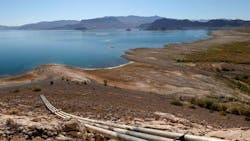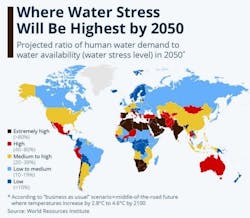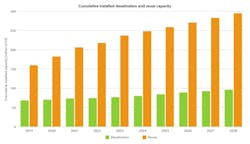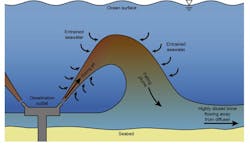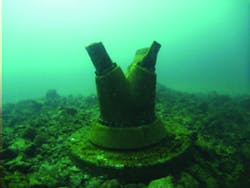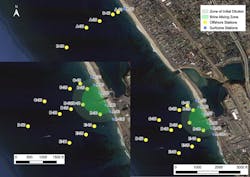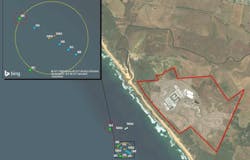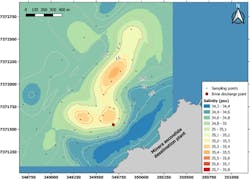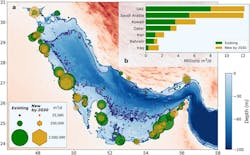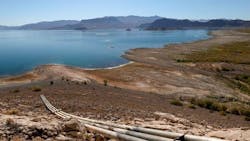Brine and misconceptions: Separating fact from fiction - The environmental reality of modern desalination
Key Highlights
- Modern desalination employs advanced diffuser technology and site-specific management to ensure rapid dilution of brine, minimizing ecological impacts.
- Long-term monitoring across multiple regions shows that brine discharge causes only localized, reversible changes with no persistent biodiversity loss.
- Strict environmental regulations, adaptive management, and transparent data sharing are key to safeguarding marine ecosystems while expanding desalination capacity.
What if everything you thought you knew about desalination brine was wrong? Despite widespread fears of environmental harm, decades of scientific evidence and real-world monitoring reveal a far more nuanced – and often surprising – reality. Modern desalination, guided by advanced engineering and evidence-driven policy, is quietly reshaping the future of water security while protecting our oceans.
This article separates fact from fiction by examining the environmental realities of modern desalination, focusing on how responsible design, rigorous monitoring, and adaptive management ensure that brine discharge has minimal ecological impact.
Executive summary
As global populations grow and climate change accelerates, water scarcity is one of the most urgent challenges of the 21st century. Desalination – converting seawater into freshwater – has become a vital solution for many water-stressed regions. Despite concerns about environmental impacts, particularly from brine discharge, decades of scientific research and long-term monitoring from projects in Australia, Israel, the United States, and Chile show that modern desalination, when designed and operated with advanced engineering and rigorous regulation, results in brine discharge that is rapidly diluted and ecologically localized.
Environmental risks from brine are often overstated. Ecological changes near outfalls are minor, reversible, and primarily driven by hydrodynamic effects rather than hypersalinity. Long-term data confirm no persistent biodiversity loss or pollutant accumulation. The affected marine areas are small, and salinity returns to ambient levels within a short distance from discharge points.
The Cost of Not Having Water – the severe economic, social, and environmental consequences of depleting natural freshwater sources – far outweigh the manageable impacts of responsible desalination. Over-extraction from rivers and aquifers leads to irreversible damage, threatening food security and livelihoods. Desalination offers a climate-resilient, sustainable alternative that complements conservation and reuse strategies.
Global experience demonstrates that modern desalination can coexist with healthy marine ecosystems. By continuing to apply scientific rigor, adaptive management, and evidence-driven policy, desalination can be a cornerstone of water security without compromising ocean health.
Water scarcity: The growing thirst for sustainable solutions
Water scarcity is a present-day challenge for over 2.3 billion people worldwide. As illustrated in Figure 1, these water scarcity hotspots are distributed across multiple continents, highlighting the global scale of the challenge. By 2050, global water demand is forecast to rise by 55%, driven by population growth, industrialization, and climate change. Traditional water sources are under immense strain, especially in arid and semi-arid regions, such as the Southwestern United States, the Middle East, and the South American Pacific coast, where climate models predict up to a 50% reduction in freshwater availability by 2060. In these regions, seawater desalination has become a vital, climate-resilient solution, offering a drought-proof supply of high-quality water.
Desalination: Bridging the gap beyond conservation and reuse
While water conservation and reuse are essential, they cannot alone bridge the gap between supply and growing demand. Agriculture consumes 70% of global freshwater, and even aggressive conservation measures cannot offset the projected 40% shortfall in many regions. Desalination, especially using seawater reverse osmosis (SWRO), provides a scalable, reliable, and climate-independent water source that complements other strategies and supports economic and public health resilience. Figure 2 demonstrates the rapid increase in both desalination and water reuse capacity worldwide, underscoring the growing reliance on these technologies.
The brine discharge debate: Myths and realities
What is brine and why is it a concern?
Brine is the concentrated saltwater byproduct of the desalination process. Its discharge into the marine environment is a focal point of environmental concern, with fears of hypersalinity, chemical pollution, and harm to marine life. However, decades of scientific monitoring and technological advancement have transformed how brine is managed and its actual impact on the ocean.
How modern desalination plants manage brine
Modern desalination plants employ advanced diffuser technology and leverage local oceanographic conditions to ensure rapid dilution and dispersion of brine. As shown in Figure 3, brine plumes are engineered to disperse efficiently, minimizing the area affected by elevated salinity. Figure 3 illustrates how modern diffuser systems create turbulent plumes that accelerate brine dilution, minimizing salinity gradients. By optimizing factors like discharge salinity, ocean currents, water depth, seafloor topography, and diffuser placement, brine plumes are quickly diluted, and salinity returns to ambient levels within a short distance from the outfall. Across diverse coastal settings, long-term monitoring shows that salinity increases remain below 5% above ambient within 100 meters (328 feet) of the discharge point, with salinity returning to background levels rapidly due to strong currents and steep seabed slopes. The affected area is highly localized, and brine is diluted more efficiently in regions with dynamic oceanography than in enclosed or shallow seas.
Ecological effects: What really happens near outfalls
Where ecological changes occur, they are generally limited to sessile or low-mobility organisms near the outfall. Studies in Australia and Chile found that some benthic species (organisms living on or within the seafloor) may temporarily decrease in abundance close to the discharge, while others, such as barnacles, may increase—patterns analogous to natural differences between exposed and sheltered reefs. Importantly, these changes are minor, reversible, and do not result in persistent biodiversity loss. After plant shutdown, marine communities typically return to pre-operation conditions within months. Evidence further indicates that ecological shifts near outfalls are often driven more by hydrodynamic changes (increased near-bed flow from diffusers) than by hypersalinity itself. The magnitude of salinity change from desalination is small compared to natural fluctuations in semi-enclosed or high-energy marine environments.
Regulation, engineering, and monitoring: Safeguarding marine life
Modern desalination plants operate under strict environmental regulations requiring continuous monitoring of water quality, marine life, and sediment chemistry. Site selection prioritizes areas with strong currents and deep water, and diffuser design is tailored to maximize dilution and minimize ecological footprint. Figure 4 provides an example of a multi-nozzle diffuser head used at the Adelaide Desalination Plant, which exemplifies best practices in brine discharge engineering. Adaptive management (a flexible approach adjusting practices based on monitoring data) ensures that any unexpected impacts are detected early and mitigated promptly. This integrated approach, supported by long-term data from multiple continents, demonstrates that, with robust engineering, evidence-driven policy, and ongoing monitoring, brine discharge from desalination plants can be managed to protect marine ecosystems.
Case study: Carlsbad Desalination Plant (California, USA) – A model for environmental compliance
The Claude “Bud” Lewis Carlsbad Desalination Plant, designed and operated by IDE Technologies, is the largest seawater desalination facility in the United States, producing up to 204,000 m³/day (54 million gallons/day) of potable water for San Diego County. California is renowned for its tight environmental safeguards, making Carlsbad a critical test case for responsible desalination.
Rigorous, independent monitoring:
From 2019 to 2023, the Carlsbad plant underwent the most robust ocean monitoring program ever conducted in the region, as mandated by the San Diego Regional Water Quality Control Board and executed by independent marine scientists from Miller Marine Science & Consulting. Key findings include:
- Ocean water near the plant remains healthy, with water quality consistent with regional patterns. No evidence was found that plant operations contributed to harmful algal blooms or degraded water quality.
- Sediment-dwelling sea creatures and benthic infaunal communities (organisms living within seafloor sediments) remained in “reference condition,” showing no adverse effects from brine discharge.
- Trace metals and other potential contaminants were detected at low levels, consistent with natural regional baselines and well below thresholds for biological effects.
- The coastal environment continues to support commercial fishing, recreation, and biological habitats without impairment.
Controlled and localized salinity impact:
The plant’s brine discharge consistently achieved compliance with California’s strict salinity limits: a maximum increase of 2.0 ppt above ambient within 100 meters (328 feet) of the outfall. The highest measured increase was 1.45 ppt (35.85 ppt vs. 34.4 ppt ambient) at 23 meters (75 feet), with rapid dilution restoring ambient conditions within 200 meters (656 feet). The State of the Ocean report concluded: “The Carlsbad Desalination Plant’s discharge is not disturbing the receiving water quality or environment outside the brine mixing zone.” The monitoring locations for these assessments are depicted in Figure 5, showing the spatial coverage of water quality stations around the Carlsbad outfall.
Ongoing environmental enhancements:
The plant is upgrading its intake and discharge systems to further protect marine life, including new screening structures and habitat restoration projects in coastal wetlands, benefiting native fish and wildlife.
After nearly a decade of operation, Carlsbad stands as conclusive evidence that large-scale desalination can operate in harmony with even the most sensitive coastal environments, when subject to meticulous supervision and state-of-the-art engineering.
Desalination in practice: Global environmental evidence
Australia – Integrated environmental management
Australia’s major desalination facilities, including Sydney’s Kurnell Plant, the Victorian Desalination Project (VDP), and the Adelaide Desalination Plant (ADP), provide some of the world’s strongest, long-term evidence that modern brine discharge, when managed with advanced engineering and data-informed standards, does not harm the marine environment. Each facility employs high-efficiency diffuser systems, thorough site selection, and continuous ecological monitoring, demonstrating that large-scale desalination can coexist with healthy marine ecosystems.
At the Kurnell Plant in Sydney, a 15-year dataset with before-and-after ecological monitoring provides rare, high-quality evidence on brine impacts. High-pressure diffusers consistently keep salinity increases below 1 practical salinity unit (psu) above background within 100 meters (328 feet) of the outfall. No persistent loss of biodiversity has been recorded; benthic communities (seafloor-dwelling organisms) remain stable, with observed changes—such as temporary increases in barnacles or reductions in polychaetes—primarily linked to increased near-bed flow from the diffusers rather than hypersalinity or chemical toxicity. Importantly, after plant shutdown, marine communities rapidly returned to pre-operation conditions, confirming that impacts are localized, minor, and reversible.
The Victorian Desalination Project near Melbourne operates under one of Australia’s strictest environmental frameworks. With a capacity of up to 150 million cubic meters per year (121,700 acre-feet per year), the VDP's multi-port diffuser system ensures that salinity increases at the edge of the 180-meter (591-foot) mixing zone remain at or below 1 psu above ambient more than 95% of the time. Quarterly ecological surveys and sediment analyses have found no significant accumulation of metals or degradation of benthic communities (organisms living on or within the seafloor) near the outfall, with marine species diversity and health matching reference sites. Figure 6 maps the placement of salinity loggers used to monitor brine dispersion and compliance at the VDP. Direct toxicity assessments confirm that brine discharge—including trace cleaning chemicals—meets guidelines for the protection of 99% of marine species, and all compliance data are publicly reported for transparency.
The Adelaide Desalination Plant sets a benchmark for sustainable brine management. The outfall, 1.1 km (0.68 miles) from shore, uses six multi-nozzle diffuser heads with duckbill valves to achieve rapid dilution—over 95% within 100 meters (328 feet). Five marine buoys provide real-time salinity data to verify compliance with strict EPA limits (maximum 1.3 ppt above ambient). Over seven years of operation, the average salinity increase at 100 meters (328 feet) is just 0.4 ppt, peaking at 0.9 ppt during maximum production—well below regulatory thresholds. Extensive assessments and ongoing monitoring have found no adverse effects on marine flora and fauna. Salinity returns to ambient levels within a short distance, and the affected area is highly localized.
Together, these long-term studies show that, with adaptive monitoring and engineering, Australian desalination plants effectively manage brine impacts, prevent pollutant accumulation in sediments, and maintain stable marine biodiversity, demonstrating the viability of responsible desalination and brine management at scale.
Israel – Scaling up responsibly
As of today, Israel produces approximately 795 million cubic meters per year (646,000 acre-feet per year) of desalinated water from six major seawater desalination plants, making up nearly 80% of the country’s domestic water supply. All these plants are located along a 200-kilometer (124-mile) stretch of Mediterranean coastline, and their combined brine discharge is closely monitored under one of the world’s most comprehensive governance structures for environmental protection.
Salinity impact: The maximum excess salinity compared to natural background near the seabed is consistently found to be lower than 5% (about 2 practical salinity units, PSU), and this is typically limited to a distance of just several meters from the outfall.
Heavy metals and sediment quality: No accumulation of heavy metals (such as iron or trace metals) has been found in marine sediments near the outfalls. Decades of monitoring show that brine discharge does not result in pollutant buildup or degraded sediment quality.
Marine life and water quality: There is no evidence of negative impacts on dissolved oxygen, turbidity, nutrients, or the biomass of algae in the monitoring areas. The richness and diversity of marine species remain stable, with any observed changes falling within the range of natural variability.
Regulatory oversight: Israel’s Ministry of Environmental Protection requires biannual marine surveys (twice a year), continuous online monitoring, and regular reporting for every plant. These include detailed analyses of water, sediment, and biological communities, with all data publicly available for transparency and scientific scrutiny.
After nearly two decades of operation and extensive scientific scrutiny, Israel’s experience demonstrates that large-scale seawater desalination—when governed by strict environmental regulations and advanced engineering—can reliably coexist with healthy marine ecosystems. As illustrated in Figure 7, Israel’s desalination infrastructure spans the Mediterranean coast, supporting both water security and environmental stewardship.
South American Pacific Coast – Harnessing natural currents
On the Pacific coast of South America, especially in Chile and Peru, desalination plants benefit from steep continental shelves and strong ocean currents that rapidly dilute brine. Recent monitoring in Chile shows that salinity increments remain below 5% above ambient within 100 meters (328 feet) of discharge points. For example, the Minera Escondida plant recorded a maximum salinity increase of 4.06% at 23 meters (75 feet), with salinity returning to ambient within 100 meters (328 feet). Figure 8 visualizes the spatial extent of the saline plume from the Minera Escondida plant, highlighting the rapid dilution achieved in this dynamic coastal setting. These increments are lower and dissipate faster than in regions with less dynamic oceanography, and affected areas are small. The rapid dilution, combined with ongoing monitoring and appropriate diffuser design, ensures compliance with international environmental standards and minimizes ecological risk beyond the immediate vicinity of the outfall.
Arabian Gulf – Basin-scale perspective
The Arabian Gulf hosts the world’s largest concentration of desalination plants, currently providing 45% of global desalinated water. Even under extreme-case projections—where desalination could reach 120 million m³/day (35.5 million acre-feet/year) by 2050—basin-wide salinity increases are expected to remain below 1 practical salinity unit (psu), well within the Gulf’s natural seasonal fluctuations of 2–4 psu. This is due to the Gulf’s strong vertical water movement, which flushes excess salinity through the Strait of Hormuz within about 1.7 years, preventing long-term accumulation. Figure 9 shows the bathymetry of the Arabian/Persian Gulf and the distribution of existing and planned desalination plants, providing context for basin-scale salinity assessments. While localized impacts near outfalls can occur, these are manageable with proper siting and engineering. The Gulf’s marine life is already adapted to high and variable salinity, further reducing the risk of significant ecological harm at the basin scale.
The Red Sea, while also a semi-enclosed basin, differs from the Arabian Gulf in depth, circulation patterns, and water residence time—factors that influence how brine discharge affects each region.
Comparative dynamics: Gulf vs. Red Sea
The Arabian Gulf and the Red Sea are often cited together as regions vulnerable to cumulative impacts from large-scale desalination, yet their oceanographic characteristics and responses to brine discharge differ in important ways. In the Gulf, strong overturning circulation and rapid flushing through the Strait of Hormuz help prevent long-term salinity buildup, even as desalination capacity is projected to expand dramatically. Marine organisms here are already adapted to high and fluctuating salinity, and modeling shows that even in worst-case scenarios, basin-wide salinity increases remain within the range of natural variability.
In contrast, the Red Sea is deeper and features a unique circulation pattern, with surface waters flowing outward and deeper waters flowing inward (the opposite of most estuaries), and has a longer water residence time. However, recent studies indicate that, despite these differences, the cumulative effect of desalination on Red Sea salinity will be even less pronounced than in the Gulf. Even under high-demand scenarios serving tens of millions of people, projected increases in regional salinity are negligible—well below the natural seasonal and spatial variability of the basin. This underscores how both physical oceanography and regulatory oversight shape the environmental footprint of desalination, and why site-specific management remains crucial for both regions.
Red Sea – Minimal regional impact
Despite projections that up to 61 million people could rely on Red Sea desalination by 2050, cumulative regional salinity increases are expected to remain below 0.1%, far less than natural variability. The Red Sea’s anti-estuarine circulation and moderate water residence time (about 4.7 years) ensure efficient flushing of excess salinity. While careful outfall management remains important to prevent local impacts, large-scale desalination is not expected to cause detectable changes in overall Red Sea salinity or threaten its ecological integrity.
Lessons for policy
The global experience with modern desalination, as demonstrated by case studies from Australia, Israel, the Arabian Gulf, the Red Sea, and the Americas, provides critical insights for policymakers and regulators. These lessons underscore how responsible practices can reconcile water security with marine conservation.
Localized, manageable impacts:
Decades of monitoring confirm that, when guided by modern engineering and site-specific management, brine discharge impacts are highly localized and reversible. This directly challenges the notion of widespread ecological harm and highlights the importance of tailoring solutions to local conditions.
Regulation, transparency, and adaptation:
Stringent, data-driven regulation—supported by continuous monitoring and public reporting—is essential for minimizing risk and building public trust. The most effective frameworks balance clear standards with flexibility, allowing for adaptive management as new data emerges. Transparency not only ensures accountability but also empowers stakeholders and the public to engage constructively.
Transferable solutions:
Proven approaches – such as advanced diffuser technology, adaptive monitoring, and open data sharing – can be successfully adapted to new regions facing water scarcity. International knowledge-sharing accelerates the adoption of effective safeguards and supports the responsible expansion of desalination.
The path forward
These lessons highlight what is possible when desalination is guided by scientific rigor, adaptability, and transparent oversight. By applying these principles, policymakers can secure resilient water futures without sacrificing marine health – ensuring that responsible desalination becomes a cornerstone of climate adaptation and sustainable development.
The cost of inaction: A risk we can’t afford
The economics of water supply are often debated, with desalination sometimes criticized for its higher direct costs compared to traditional sources. However, this comparison overlooks the Cost of Not Having Water – the immense economic, social, and environmental consequences that arise when water simply isn’t available. When factoring in the long-term economic costs of aquifer collapse – including land subsidence, loss of agricultural productivity, and the expense of emergency water imports – desalination emerges as a cost-competitive solution for water-stressed regions. The Cost of Not Having Water is not just measured in dollars, but in lost livelihoods, food insecurity, and irreversible environmental damage. In this context, desalination is not a luxury or a last resort, but a vital component of a diversified and resilient water portfolio.
While concerns about desalination persist, the alternatives are dire:
- The collapse of the Colorado River Delta: Over-extraction has reduced flow by 20% since 2000, threatening 40 million users and causing devastating ecological and economic consequences. As a stark illustration, Figure 10 depicts abandoned water infrastructure at Lake Mead, a symbol of the consequences of unsustainable water management.
- The Ogallala Aquifer: Vital to U.S. agriculture, it is declining by 1 meter per year (3.3 feet per year)—posing a direct threat to food security.
- Aral Sea Disaster: Over-extraction reduced the lake to 10% of its size, causing biodiversity collapse.
Desalination, when responsibly managed, offers a sustainable alternative that relieves pressure on overstressed rivers and aquifers.
Securing water futures: The role of responsible desalination
The accumulated scientific evidence is clear: when designed, sited, and operated with modern engineering and diligent regulatory review, seawater desalination can reliably coexist with healthy marine environments. Global case studies—from California to Australia, Israel, and beyond—demonstrate that brine impacts are localized, reversible, and manageable when best practices are applied. As climate change accelerates and water scarcity intensifies, desalination is poised to move from a technology that once raised concerns to a cornerstone of holistic water stewardship. The path forward is not to reject this solution, but to embrace continuous improvement, transparent monitoring, and adaptive, evidence-driven policy, ensuring that water security and marine conservation go hand in hand in a climate-resilient future.
References
- International Desalination and Reuse Association (IDRA), IDRA Desalination & Reuse Handbook (2024–2025).
- Global Water Intelligence (GWI), Market Focus Deck: Desalination and Reuse (2023, October).
- Miller Marine Science & Consulting, Inc. (2023). Carlsbad Desalination Plant 2019–2023 State of the Ocean Report (USA, California).
- Sola, A., et al. (2024). Assessment of brine discharges dispersion for sustainable management of SWRO plants on the South American Pacific coast. Marine Pollution Bulletin, 207, 116905.
- Chenoweth, J., et al. (2022). Cumulative effects of large-scale desalination on the salinity of semi-enclosed seas (Red Sea, Middle East). Desalination, 526, 115522.
- Clark, G. F., et al. (2018). First large-scale ecological impact study of desalination outfall (Sydney, Australia). Water Research, 145, 757–768.
- Brusilovsky, M., et al. (2022). Israel as a Model for Environmentally Responsible Desalination (Israel). In Proceedings of the International Desalination Association (IDA) World Congress 2022.
- Paparella, F., et al. (2022). Long‑term, basin‑scale salinity impacts from desalination in the Arabian/Persian Gulf. Scientific Reports, 12, 20549.
- Department of Environment, Land, Water and Planning, Victoria. (2023). Victorian Desalination Project Operational Marine Monitoring Program (Victoria, Australia).
- Blesing, J., et al. (2016). Seawater desalination: A sustainable solution to world water shortage. Water e-Journal, 1(1). Australian Water Association.
About the Author
Chen Rosenfeld
Chen Rosenfeld is a Business Development Manager at IDE Water Assets, part of IDE Technologies Group, a global leader in advanced water treatment and desalination solutions. With nearly 20 years of experience in the international water sector, Chen specializes in the development, financing, and implementation of large-scale water infrastructure projects, including public-private partnerships (PPPs) such as BOT models. He has held senior positions in business development, sales, and project management. Chen holds a B.Sc. in Environmental Engineering from the Technion – Israel Institute of Technology and an M.A. in Legal Studies from Bar-Ilan University. His expertise bridges technological innovation and commercial strategy, advancing sustainable water solutions for both public and private sector clients worldwide.
